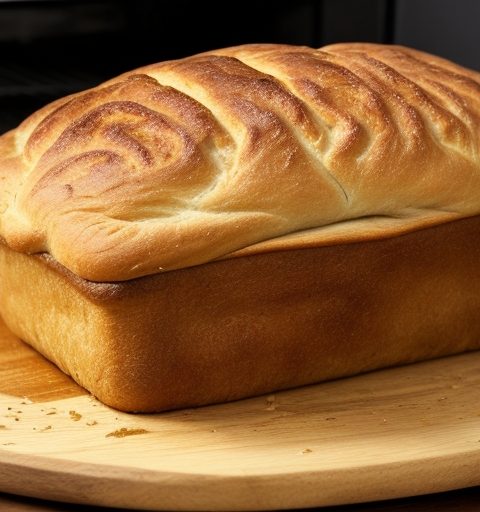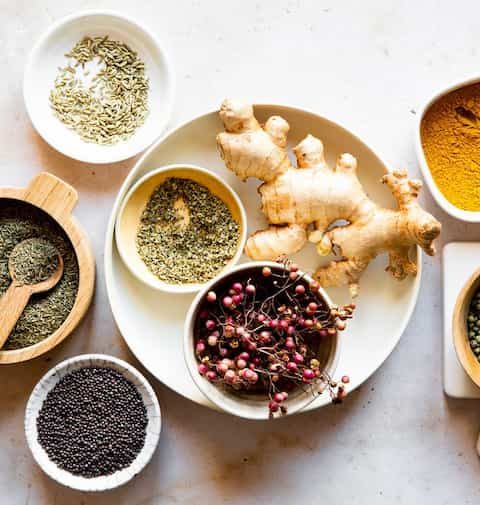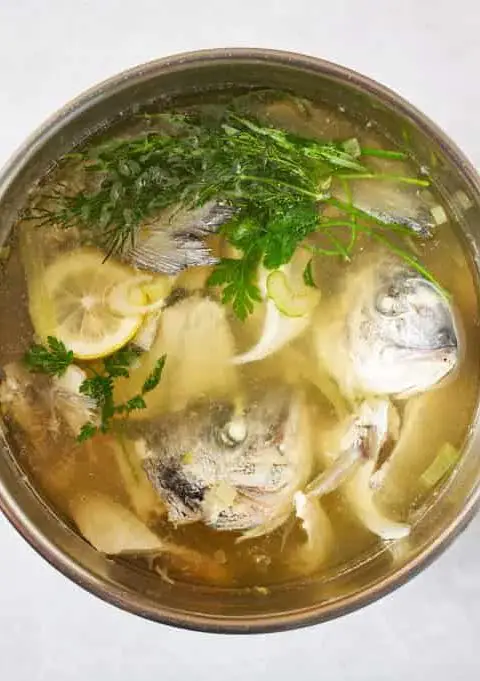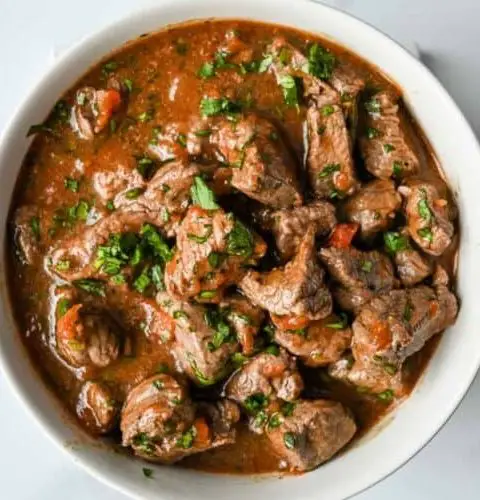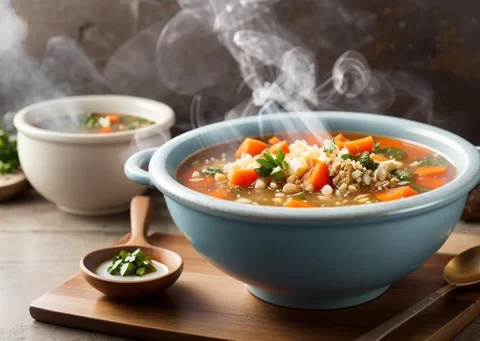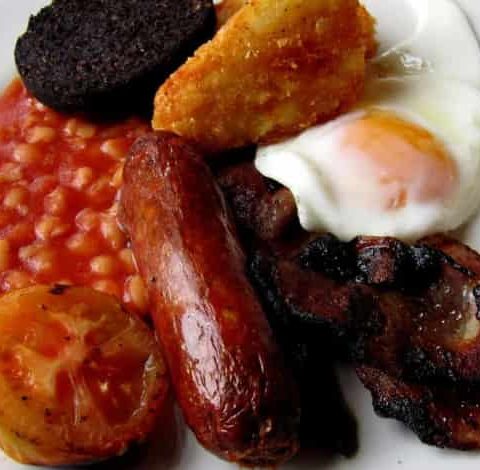In this article, I will share with you some techniques and tips on how to master slow-cooked soups, which are perfect for the cold season. Slow-cooked soups are not only delicious and comforting, but also nutritious and economical. They can be made with a variety of ingredients, such as meat, vegetables, beans, grains, herbs, and spices. They can also be customized to suit your preferences and dietary needs.
Here are the main topics that I will cover in this article:
- What is slow cooking and why is it good for soups?
- How to choose the best slow cooker for your needs
- How to prepare the ingredients for slow-cooked soups
- How to layer the ingredients in the slow cooker
- How to season and flavor your slow-cooked soups
- How to adjust the cooking time and temperature for different types of soups
- How to thicken and finish your slow-cooked soups
- How to store and reheat your slow-cooked soups
Let’s get started!
What is slow cooking and why is it good for soups?
Slow cooking is a method of cooking food at a low temperature for a long period of time, usually using a special appliance called a slow cooker or a crock pot. Slow cooking has many benefits, especially for soups. Here are some of them:
- It enhances the flavor and texture of the ingredients. Slow cooking allows the ingredients to release their natural juices and aromas, creating a rich and complex broth. It also tenderizes tough cuts of meat, such as beef chuck or pork shoulder, and softens hard vegetables, such as carrots or potatoes.
- It preserves the nutrients and vitamins of the ingredients. Slow cooking does not expose the ingredients to high heat or water, which can destroy some of their nutritional value. It also prevents the loss of water-soluble vitamins, such as vitamin C or B-complex, which can leach out into the cooking liquid.
- It saves time and energy. Slow cooking does not require much preparation or supervision. You can simply put all the ingredients in the slow cooker, set it on low or high, and leave it alone for several hours. You don’t have to worry about stirring, checking, or adjusting the heat. You can also do other things while your soup is cooking, such as working, studying, or relaxing.
- It reduces the risk of burning or overcooking. Slow cooking maintains a steady and gentle heat that prevents the food from scorching or drying out. You don’t have to worry about your soup boiling over or sticking to the bottom of the pot. You can also leave your soup in the slow cooker for longer than the recommended time without ruining it.
How to choose the best slow cooker for your needs
There are many types and models of slow cookers available on the market, with different features and capacities.
Here are some factors to consider when choosing the best slow cooker for your needs:
Size.
The size of your slow cooker depends on how much food you want to cook at once, and how many people you want to serve. The most common sizes are 4-quart, 6-quart, and 8-quart. A 4-quart slow cooker can make enough soup for 4 to 6 people, a 6-quart slow cooker can make enough soup for 6 to 8 people, and an 8-quart slow cooker can make enough soup for 8 to 10 people.
Shape.
The shape of your slow cooker affects how well the ingredients fit and cook in it. The most common shapes are round and oval. A round slow cooker is good for making small batches of soup or stew, while an oval slow cooker is good for making large batches of soup or stew, as well as roasts or whole chicken.
Material.
The material of your slow cooker affects how well it conducts and retains heat, as well as how easy it is to clean and maintain. The most common materials are ceramic, metal, and nonstick. A ceramic slow cooker is good for even heat distribution and retention, but it can be heavy and fragile. A metal slow cooker is good for fast heat transfer and durability, but it can be prone to rusting or scratching. A nonstick slow cooker is good for easy cleaning and maintenance, but it can be susceptible to peeling or chipping.
Features.
The features of your slow cooker affect how convenient and versatile it is to use. Some of the features that you may want to look for are:
- A removable insert that allows you to transfer the food from the slow cooker to the table or the refrigerator without changing containers.
- A glass lid that allows you to see the food without lifting the lid and releasing the heat and moisture.
- A timer that allows you to set the cooking time and automatically switches the slow cooker to a warm setting when the time is up.
- A temperature control that allows you to adjust the heat level from low to high, or from warm to hot.
- A programmable function that allows you to set the cooking time and temperature in advance, and start the slow cooker at a later time.
- A locking lid that allows you to transport the slow cooker without spilling the contents.
How to prepare the ingredients for slow-cooked soups
Before you put the ingredients in the slow cooker, there are some steps that you may want to take to prepare them for optimal results.
Here are some tips on how to prepare the ingredients for slow-cooked soups:
Wash and chop the vegetables.
- Wash and chop into bite-sized pieces.
- Common choices include onions, garlic, celery, carrots, potatoes, and various greens.
- If using frozen vegetables, consider thawing them first to minimize excess water in the soup.
Brown and trim the meat.
- Brown the meat to enhance its flavor and texture. Trim off excess fat.
- Suitable options include beef, pork, chicken, turkey, and lamb.
- For ground meat, drain after browning.
- For meat alternatives like tofu or tempeh, consider adding them later in the cooking process to maintain their integrity.
Soak and rinse the beans.
- Pre-soak and rinse to shorten cooking time and improve digestibility.
- Options range from black beans to lentils.
- If using canned beans, rinse to reduce sodium and starch content.
Measure and mix the liquids.
- Measure and combine the base liquids for your soup.
- Options include water, broths, tomato sauce, milk, and even coconut milk.
- For enhanced flavor, consider adding wine or beer.
- Ensure the liquid covers the ingredients but doesn’t oversaturate, to avoid diluting the flavor or resulting in an overly thin soup.
How to Layer the Ingredients in the Slow Cooker
Once you have prepared all the ingredients for your soup, you need to layer them in the slow cooker in a certain order. This will ensure that they cook evenly and thoroughly. Here is a general guide on how to layer the ingredients in the slow cooker:
Start with a layer of onions and garlic.
Onions and garlic are aromatic vegetables that will add flavor and depth to your soup. They also act as a buffer between the bottom of the slow cooker and the other ingredients, preventing them from burning or sticking. You should spread a layer of chopped onions and garlic on the bottom of the slow cooker.
Add a layer of meat or meat alternatives.
Meat or meat alternatives are protein-rich ingredients that will add body and texture to your soup. They also need more time and heat to cook than most vegetables or grains. You should place a layer of browned and trimmed meat or meat alternatives on top of the onions and garlic.
Add a layer of beans or grains.
Beans or grains are carbohydrate-rich ingredients that will add bulk and fiber to your soup. They also need more time and liquid to cook than most vegetables or dairy products. You should place a layer of soaked and rinsed beans or grains on top of the meat or meat alternatives.
Add a layer of hard vegetables.
Hard vegetables are starchy or root vegetables that will add sweetness and color to your soup. They also need more time and liquid to cook than most soft vegetables or dairy products. You should place a layer of chopped hard vegetables on top of the beans or grains.
Add a layer of soft vegetables.
Soft vegetables are leafy or watery vegetables that will add freshness and vitamins to your soup. They also need less time and liquid to cook than most hard vegetables or dairy products. You should place a layer of chopped soft vegetables on top of the hard vegetables.
Add a layer of dairy products or sauces.
Dairy products or sauces are creamy or tangy ingredients that will add richness and flavor to your soup. They also need less time and heat to cook than most vegetables or grains. You should place a layer of dairy products or sauces on top of the soft vegetables. You can use any dairy products or sauces that you like, such as cheese, sour cream, yogurt, cream cheese, butter, milk, cream, coconut milk, tomato sauce, salsa, pesto, etc.
Add a layer of herbs and spices.
Herbs and spices are aromatic and flavorful ingredients that will add zest and character to your soup. They also need less time and heat to cook than most vegetables or dairy products. You should sprinkle a layer of herbs and spices on top of the dairy products or sauces. You can use any herbs and spices that you like, such as salt, pepper, bay leaf, thyme, rosemary, oregano, basil, parsley, cilantro, cumin, paprika, curry, turmeric, ginger, garlic powder, onion powder, etc.

How to season and flavor your slow-cooked soups
Once your ingredients are set in the slow cooker, it’s crucial to properly season and flavor your soup for the best taste.
Here’s a straightforward guide:
Pour the liquid over the ingredients.
Pour the pre-measured liquid over the ingredients, ensuring they’re covered but not oversaturated. Avoid filling to the point of overflow or resulting in a too-thin soup. If needed, more liquid can be added during cooking to adjust consistency.
Stir the ingredients gently.
Give the ingredients a gentle stir to ensure an even distribution of flavors. Refrain from excessive stirring, as this could break some ingredients or let out too much steam. A mid-cooking stir can be beneficial for checking consistency and seasoning.
Taste and adjust the seasoning.
- Periodically taste your soup, both before and after cooking, to gauge its seasoning. Adjust with salt, pepper, herbs, spices, or acidic elements like vinegar or lemon juice as needed. For added creaminess or tang, consider incorporating dairy products or sauces.
How to adjust the cooking time and temperature for different types of soups
The cooking time and temperature for your slow-cooked soups depend on the type of soup that you are making and the type of slow cooker that you are using. Here are some general guidelines on how to adjust the cooking time and temperature for different types of soups:
Low vs high setting.
Most slow cookers have two settings: low and high. The low setting cooks the food at a lower temperature for a longer period of time, while the high setting cooks the food at a higher temperature for a shorter period of time. The low setting is good for making soups that have tough meats or hard vegetables that need more time to tenderize and soften. The high setting is good for making soups that have soft meats or vegetables that need less time to cook and retain their shape and texture.
Cooking time range.
The cooking time range for slow-cooked soups varies from 4 to 10 hours on low setting, and from 2 to 5 hours on high setting. The exact cooking time depends on the size and type of your slow cooker, as well as the size and type of your ingredients. You can check the doneness of your soup by inserting a fork or a knife into the meat or vegetables and seeing if they are tender and cooked through.
Cooking time conversion.
If you want to convert the cooking time from low setting to high setting, or vice versa, you can use this formula: divide the low setting cooking time by 2 to get the high setting cooking time; multiply the high setting cooking time by 2 to get the low setting cooking time. For example, if a recipe calls for 8 hours on low setting, you can cook it for 4 hours on high setting; if a recipe calls for 3 hours on high setting, you can cook it for 6 hours on low setting.
How to thicken and finish your slow-cooked soups
After your soup is cooked in the slow cooker, you may want to thicken it and finish it with some additional steps. Here are some tips on how to thicken and finish your slow-cooked soups:
Remove excess fat and grease.
You may want to remove some of the excess fat and grease that may have accumulated on top of your soup during the cooking process. You can do this by skimming it off with a spoon or a ladle, or by using a fat separator or a paper towel. This will make your soup healthier and less oily.
Thicken the broth.
You may want to thicken the broth of your soup if you find it too thin or watery. You can do
Puree or mash some of the ingredients.
You can puree or mash some of the ingredients in your soup with a blender, a food processor, an immersion blender, a potato masher, or a fork. You can puree or mash all or some of the ingredients, depending on how smooth or chunky you want your soup to be. This will thicken the broth and make it creamier and smoother.
Cheese or cream.
You can add some cheese or cream to your soup and stir it well. You can use any cheese or cream that you like, such as cheddar, parmesan, mozzarella, cream cheese, sour cream, heavy cream, etc. This will thicken the broth and make it richer and more flavorful.
Finish with some garnishes.
Enhance your soup’s appearance, texture, and flavor with thoughtful garnishes. Consider these options:
- Fresh herbs like parsley, cilantro, basil, or chives add color and a burst of flavor.
- Green onions lend a mild crunch and vibrant hue.
- Croutons offer a delightful crunch, while bacon bits give a savory touch.
- For a creamy element, opt for shredded cheese, sour cream, or yogurt.
Simply sprinkle or place your chosen garnishes atop each serving for an elevated dining experience.
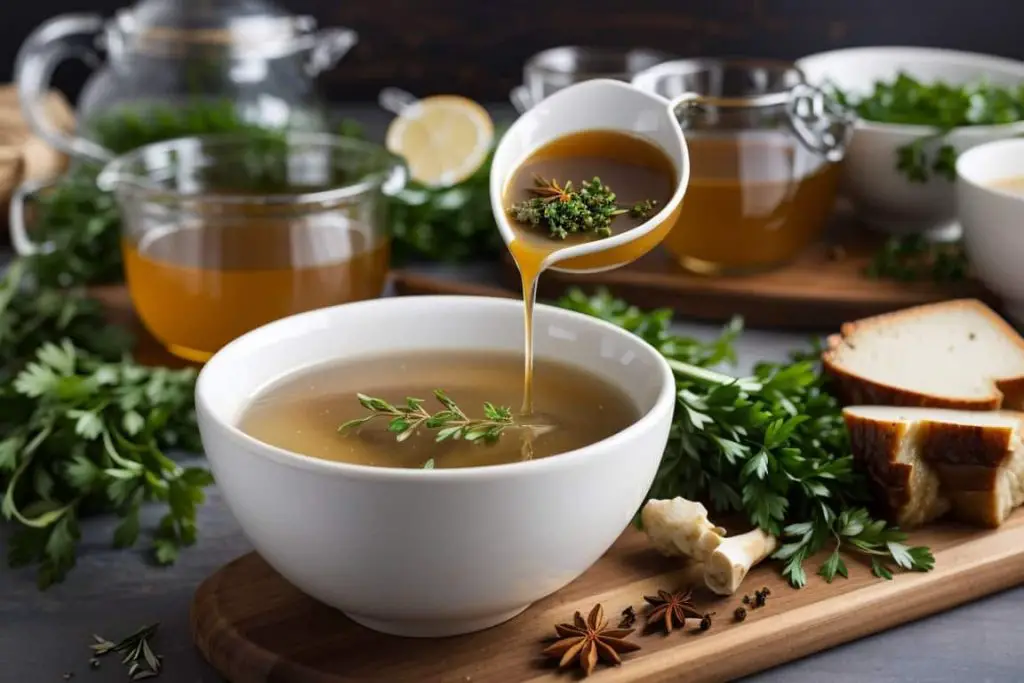
How to store and reheat your slow-cooked soups
After you have enjoyed your slow-cooked soups, you may want to store and reheat the leftovers for later consumption. Here are some tips on how to store and reheat your slow-cooked soups:
Store in an airtight container.
- Once cooled, transfer the soup to an airtight container.
- Label with the contents and date of preparation.
- Refrigerate and consume within 4 days, or freeze for extended storage up to 3 months.
Refrigerate for up to 4 days.
- Warm on the stove over medium heat, stirring occasionally, until thoroughly heated.
- Alternatively, use a microwave-safe bowl, stirring every couple of minutes, to ensure even heating.
Freeze for up to 3 months.
- Ideally, thaw overnight in the refrigerator before reheating.
- If reheating directly from frozen, gently warm on the stove over low heat, adding water if needed. Stir periodically.
- For microwave reheating, use a microwave-safe bowl, stir every few minutes, and add water if necessary to achieve desired consistency.
FAQs
Here are some frequently asked questions about slow-cooked soups:
Can I use any type of slow cooker for making soups?
Yes, you can use any type of slow cooker for making soups, as long as it has enough capacity and features to suit your needs. However, some types of slow cookers may have different cooking times and temperatures than others, so you may need to adjust them accordingly.
Can I use any type of ingredients for making soups?
Yes, you can use any type of ingredients for making soups, as long as they are compatible with slow cooking and with each other. However, some types of ingredients may have different cooking times and liquid requirements than others, so you may need to adjust them accordingly.
Can I add or omit any ingredients from my soup?
Yes, you can add or omit any ingredients from your soup, as long as they do not affect the overall balance and flavor of your soup. However, some ingredients may have different roles and functions in your soup than others, such as thickening agents or flavor enhancers, so you may need to compensate for them accordingly.
Can I make vegetarian or vegan soups?
Yes, you can make vegetarian or vegan soups by using vegetable broth instead of meat broth, and by using meat alternatives instead of meat. You can also use dairy alternatives instead of dairy products if you want to make vegan soups.
Can I double or halve the recipe for my soup?
Yes, you can double or halve the recipe for your soup by multiplying or dividing all the ingredients by 2. However, you may need to adjust the cooking time and temperature accordingly, as well as the size and type of your slow cooker.
Conclusion
Slow-cooked soups are one of the best ways to enjoy a warm and hearty meal during the cold season. They are easy to make, delicious to eat, and nutritious to consume. They can also be customized to suit your taste buds and dietary requirements.
By following these techniques and tips on how to master slow-cooked soups, you will be able to create amazing soups that will impress yourself and your loved ones. You will also be able to save time and money by using simple ingredients and appliances.
So what are you waiting for? Grab your slow cooker and start making some slow-cooked soups today!


